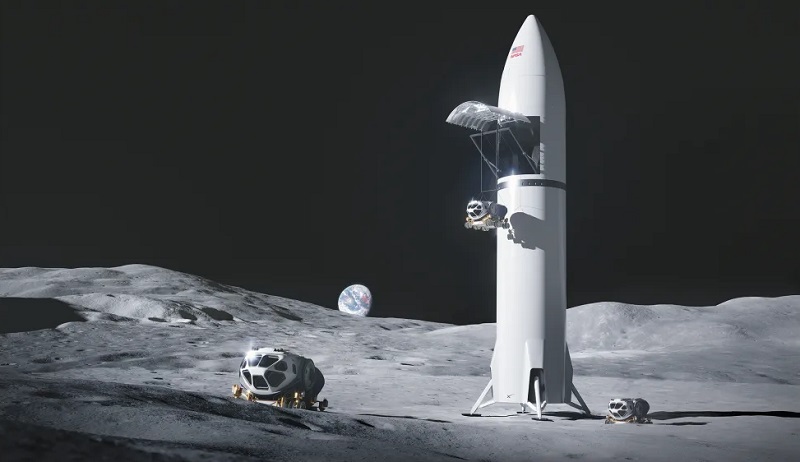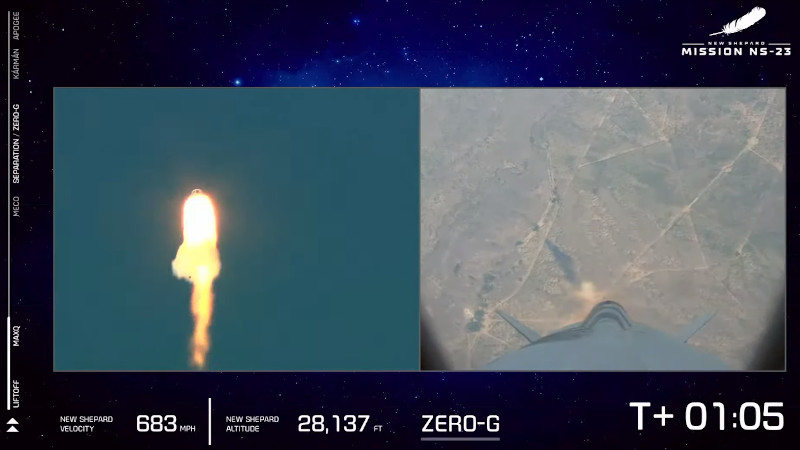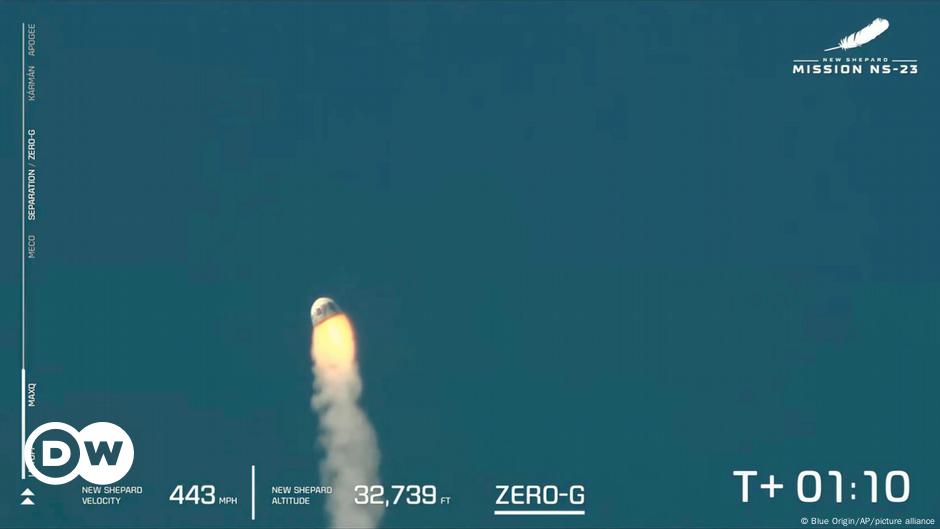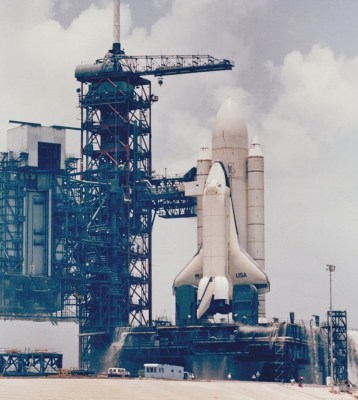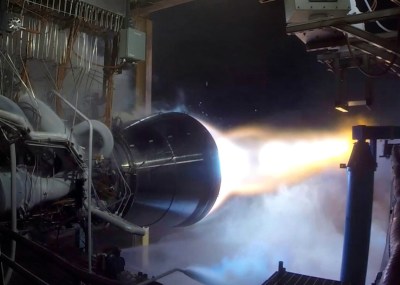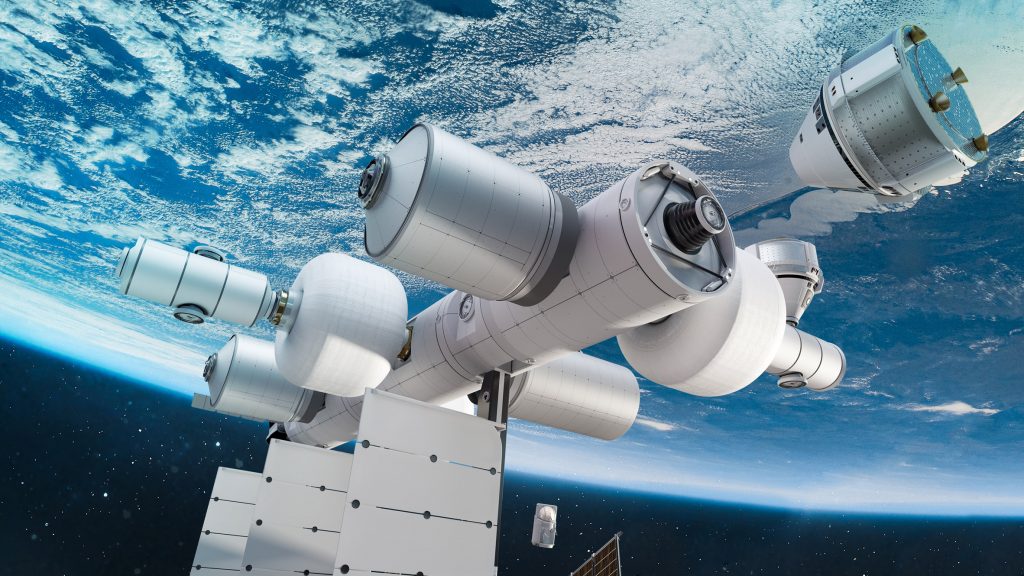#blueorigin
Большие грузовые модули для лунных миссий по программе «Артемида»
В рамках кампании НАСА «Артемида» агентство и его партнеры отправят на поверхность Луны крупное оборудование, чтобы обеспечить долгосрочное научное исследование Луны. Поставщики систем приземления, SpaceX и Blue Origin, начинают разработку лунных посадочных модулей для доставки крупных грузов для удовлетворения этих потребностей. НАСА заключило контракт с SpaceX и Blue Origin на поставку посадочных систем для доставки …
Сообщение Большие грузовые модули для лунных миссий по программе «Артемида» появились сначала на AB-NEWS.
#космонавтика #artemis #blueorigin #spacex #исследованиелуны #наса #lang_ru #ru #abnewsru #abnews #наукаитехника
НАСА тестирует систему стыковки на лунном корабле SpaceX

НАСА потратило годы на работу над ракетой-носителем SLS (Space Launch System) и космическим кораблем «Орион», которые должны доставить людей на Луну в ближайшие годы, но для того, чтобы сделать «один маленький шаг», потребуется не один космический корабль. SpaceX строит первый посадочный модуль для миссий «Артемиды» (Artemis) как специальный вариант ракеты Starship. Среди модификаций для этой […]
Сообщение НАСА тестирует систему стыковки на лунном корабле SpaceX появились сначала на AB-NEWS.
#космонавтика #artemis #blueorigin #orion #sls #spacex #исследованиелуны #луна #наса #lang_ru #ru #abnewsru #abnews #наукаитехника
One person like that
Астронавты испытали лифт Starship для высадки на Луну
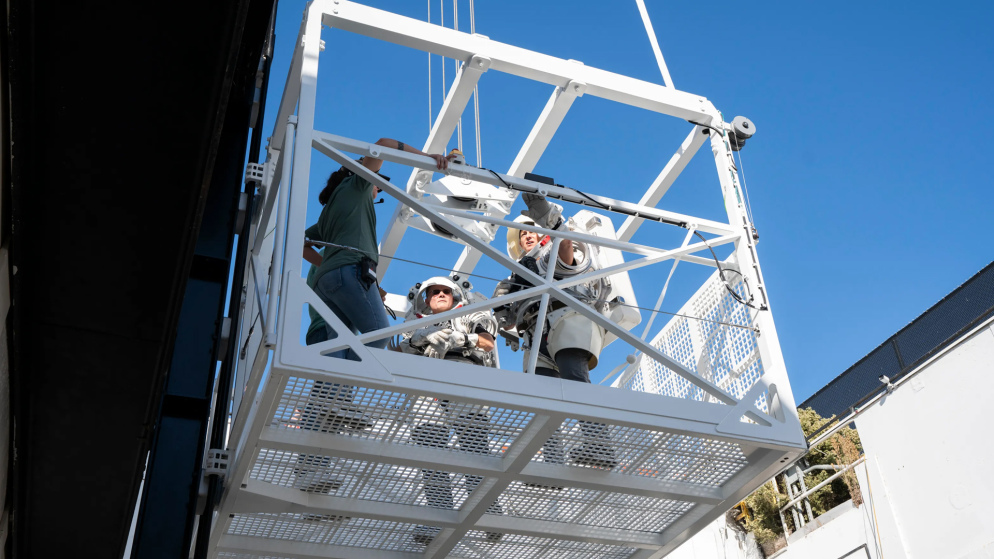
НАСА планирует возвращение на Луну, и SpaceX является ключевой частью этого плана. Компания Илона Маска работает над специальной версией своей будущей ракеты Starship — Human Landing System (HLS). Первая посадка в рамках миссии «Артемида-3» с экипажем (Artemis III) все еще запланирована на конец 2025 года (хотя более реально выглядит 2027), и предстоит еще много работы. […]
Сообщение Астронавты испытали лифт Starship для высадки на Луну появились сначала на AB-NEWS.
#космонавтика #artemis #blueorigin #orion #sls #spacex #луна #наса #lang_ru #ru #abnewsru #abnews #наукаитехника
One person like that
Blue Origin возвращается в космос после годичного перерыва
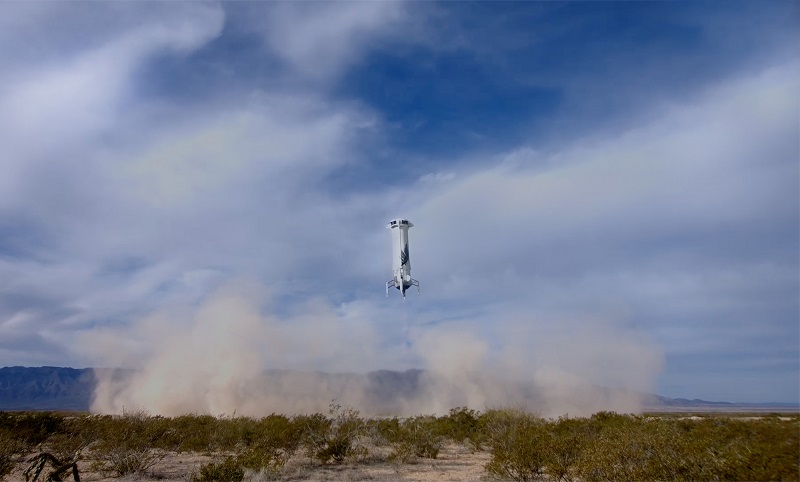
После более чем года простоя ракета New Shepard компании Blue Origin вернулась в небо и завершила свой 24-й полет, взлетев со стартовой площадки компании в Техасе, доставив 33 полезных груза на край космоса. Беспилотная миссия стартовала 19 декабря 2023 года с космической капсулой RSS HG Wells, установленной на вершине ракеты-носителя NS.9. После отделения ракета-носитель достигла […]
Сообщение Blue Origin возвращается в космос после годичного перерыва появились сначала на AB-NEWS - Новости науки и техники.
#космонавтика #blueorigin #lang_ru #ru #abnewsru #abnews #наукаитехника
One person like that
2024 станет насыщенным годом в освоении космоса
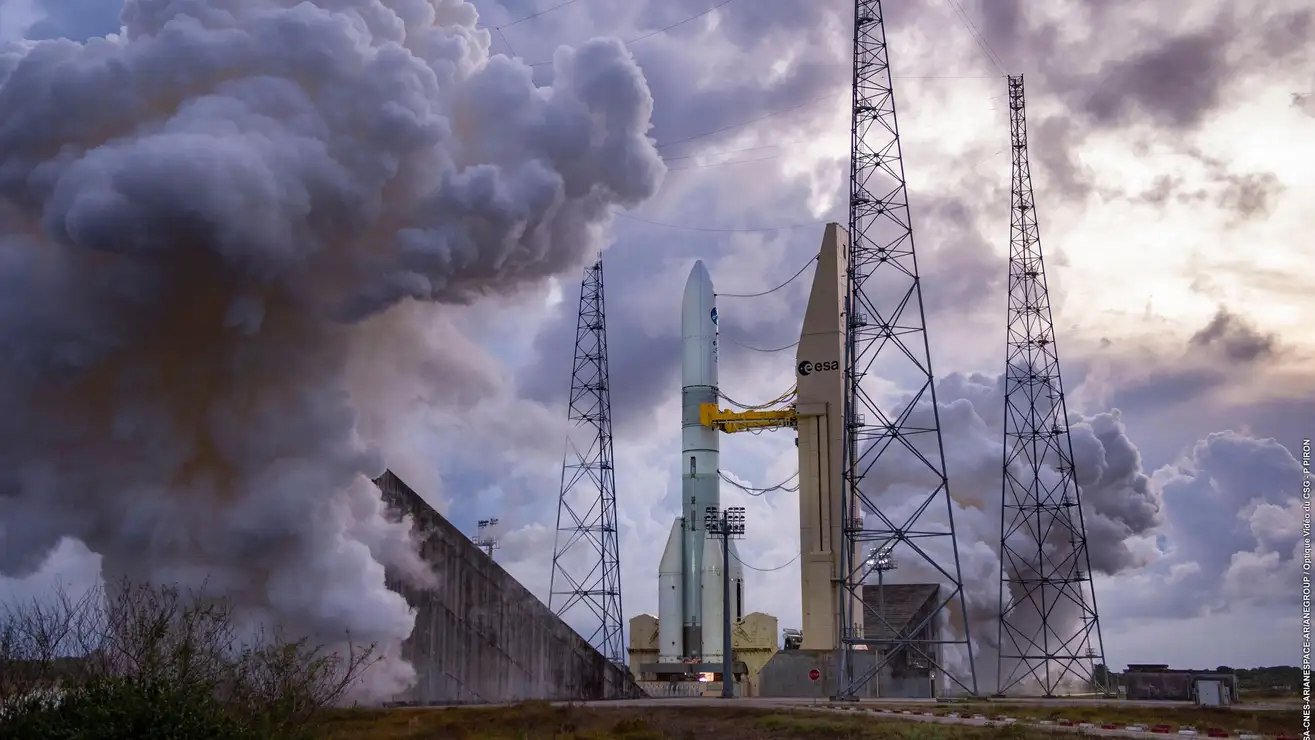
Миссия на марсианские спутники, множество частных лунных кораблей, зонды к Венере и Юпитеру, а также испытания тяжелых многоразовых ракет — вот лишь некоторые из многих ярких событий, которые мы будем наблюдать в ближайшие 12 месяцев. Вот основные миссии на 2024 год. Луна займет центральное место в 2024 году В следующем году запланировано беспрецедентное количество миссий […]
Сообщение 2024 станет насыщенным годом в освоении космоса появились сначала на AB-NEWS - Новости науки и техники.
#космонавтика #artemis #bepicolombo #blueorigin #boeing #dart #esa #europaclipper #isro #jaxa #spacex #космическиетехнологии #миссияjuice #lang_ru #ru #abnewsru #abnews #наукаитехника
One person like that
Fehlstart für Bezos Blue-Origin-Kapsel | DW | 12.09.2022
Der Countdown lief, die Rakete hob ab. Doch die Blue-Origin-Kapsel von Amazon-Gründer Jeff Bezos erreichte den Weltraum nicht. Es kam zum Startabbruch in 8500 Metern Höhe.#USA #Texas #JeffBezos #BlueOrigin
Fehlstart für Bezos Blue-Origin-Kapsel | DW | 12.09.2022
MaxQ ABORT! - Blue Origin's New Shepard Has Fiery Engine Failure In Flight
MaxQ ABORT! - Blue Origin's New Shepard Has Fiery Engine Failure In Flight
https://youtu.be/DoRp7nRIOpo
https://redirect.invidious.io/DoRp7nRIOpo
tl;dr: Capsule separated with the emergency motor, got a nice quick speed/ascent boost into the thickest air which slowed it down rapidly for a more or less regular descent and recovery.... Booster is presumed lost somewhere in the desert, probably tumbling while coming down..
#Space #Flight #SpaceFlight #News #MaxQ #Abort #Blue #Origin #BlueOrigin #Scott #Manley #ScottManley #Failure in #Flight #NS23 #New #Shepard #BE-3 #Engine
6 Likes
1 Shares
Ученые моделируют безопасный способ посадки людей на Марс

Математическая модель, разработанная экспертами по космической медицине из Австралийского национального университета (ANU), может быть использована для прогнозирования того, смогут ли люди безопасно отправиться на Марс и выполнить свои миссии после того, как ступят на Красную планету. Команда ANU смоделировала воздействие длительного пребывания в невесомости на сердечно-сосудистую систему, чтобы определить, может ли человеческое тело выдерживать гравитационные […]
Сообщение Ученые моделируют безопасный способ посадки людей на Марс появились сначала на AB-NEWS - Новости науки и техники.
#астрономия #космонавтика #blueorigin #spacex #гравитация #марс #lang_ru #ru #abnewsru #abnews #наукаитехника
One person like that
В космос на воздушном шаре — показаны иллюстрации капсулы «Neptune»
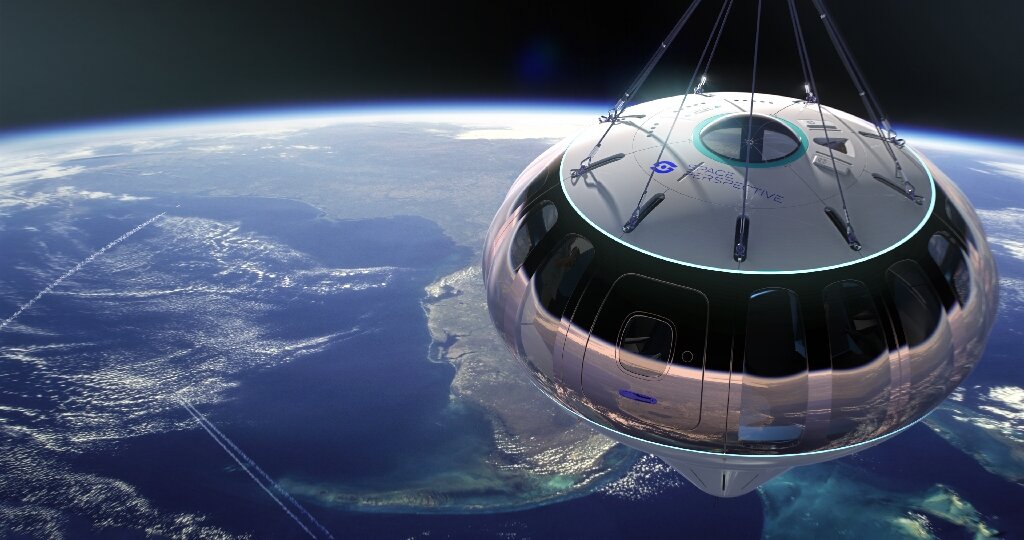
На новом рендеринге изображения, предоставленном Space Perspective, выпущенном 7 апреля 2022 года, показан внешний вид капсулы космического корабля «Neptune». Новый участник рынка космического туризма обещает клиентам виды на кривизну Земли из комфортной роскошной кабины, поднятой в верхние слои атмосферы на гигантском воздушном шаре. Компания Space Perspective представила иллюстрации своих стратосферных капсул, которые она надеется начать […]
Сообщение В космос на воздушном шаре -- показаны иллюстрации капсулы «Neptune» появились сначала на AB-NEWS - Новости науки и техники.
#космонавтика #технологии #blueorigin #spacex #lang_ru #ru #abnewsru #abnews #наукаитехника
Blue Origin Rolls Out Test Article For Next-Gen Rocket
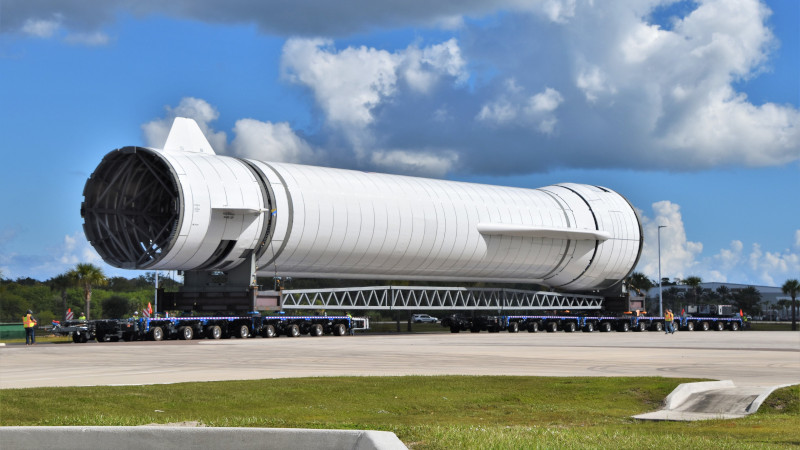
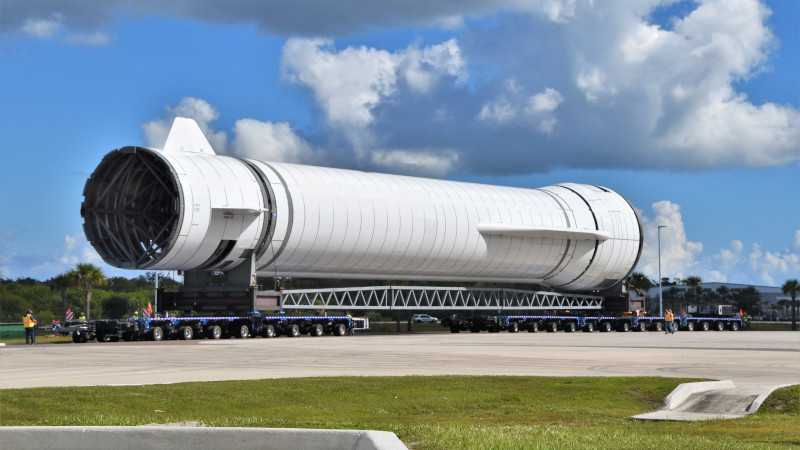
By any metric you care to use, this is a very exciting time for America's space program. NASA is refocusing their efforts towards the Moon and beyond, SpaceX is launching routine crew and cargo flights to the International Space Station with reusable rockets, and if you've got deep enough pockets, there are now multiple companies offering suborbital pleasure trips requiring little more than a few hours worth of training. It's taken longer than many people had hoped, but it seems we're finally making the confident strides necessary to truly utilize space's vast resources.
But things are just getting started. A new generation of massive reusable rockets are currently being developed, which promise to make access to space cheaper and faster than ever before. We've seen quite a bit of SpaceX's Starship, thanks in no small part to the dramatic test flights that the media-savvy company has been regularly live streaming to YouTube. But Blue Origin, founded by Amazon's Jeff Bezos, has been far more secretive about their New Glenn. That is, until now.
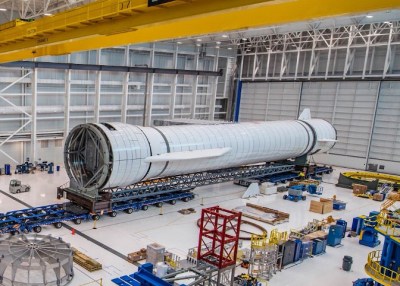 GS1 under construction in Florida.
GS1 under construction in Florida.
On November 8th, Blue Origin rolled out their GS1 simulator for the New Glenn's first stage. This stand-in for the real rocket will never fly, but it's designed to perfectly recreate the dimensions, center of gravity, and mass, of the real thing. Ground teams will use the GS1 to practice safely transporting the booster, which is approximately half the length of the Saturn V, from their production facility to Launch Complex 36 (LC-36) at Cape Canaveral. It will also be used to test the fit and function of various pieces of ground support equipment, and eventually, the second stage stacking procedure.
For the uninitiated, it might seem like this is a lot of fuss over what's ultimately just a hollow metal tube. But the introduction of a test article such as this has traditionally been a major milestone during the design and construction of rockets and spacecraft, dating back to the "boilerplate" test capsules used during the Mercury, Gemini, and Apollo programs; a sure sign that what was just an idea is now becoming a reality.
Practice Makes Perfect
 Testing the launch escape system (LES)
Testing the launch escape system (LES)
As anyone who's worked on a project with many moving parts knows, sketches on paper or CAD models on the screen will only get you so far. Eventually you've got to commit your design, or at least some subset of it, to physical hardware to make sure your components fit and interact in the way you expect. This concept is even more critical when talking about something as monstrously complex as an orbital booster or human-rated spacecraft.
NASA created many test capsules in the early days of their manned space program, which ranged in complexity from inert mass simulators to instrument-laden craft that were actually launched into orbit to collect data on vehicle performance or the space environment. After all, in those early days, there were far more questions than answers. Without the luxury of modern simulation technology, building and flying a dummy capsule was the only real option.
By some accounts, there were at least 50 test capsules constructed for the Apollo program alone. Many of these bore little resemblance to the final Command Module that took the astronauts to the Moon, but that wasn't always the point. Conversely, some were so accurate internally that they were used for astronaut training. While a large number of these capsules have survived into the present day, and can be found in museums all over the United States, several were either destroyed or otherwise lost during testing. Some ended up being cut up for scrap, or rebuilt and reused for another experiment.
Some Assembly Required
By the time the Space Shuttle development program was in full swing, the state-of-the-art had improved considerably. NASA was far more confident in their ability to simulate the behavior of the vehicle, to the point that there was famously no test flight of the complete Shuttle "stack" before John Young and Robert Crippen rode Columbia to space on April 12th, 1981.
But that's not to say they didn't have some help leading up to the first crewed launch. NASA ran an extensive series of Approach and Landing Tests (ALTs) using the Enterprise , a prototype orbiter that was originally intended to be retrofitted for spaceflight until it was determined that it would actually be cheaper to build Challenger from scratch due to changes in the final vehicle design.
These flight tests, which saw the Enterprise dropped from the iconic Boeing 747 Shuttle Carrier Aircraft (SCA), were designed to characterize how the orbiter would handle while gliding back down to Earth after reentering the atmosphere. When the ALT program was complete, Enterprise went on tour to several NASA facilities for further testing.
It underwent vibratory tests at Marshall Space Flight Center, and later traveled to Kennedy Space Center so it could be used to verify stacking procedures in the Vehicle Assembly Building. Eventually, it even made its way to the launchpad at LC-39 where it was mated to dummy versions of the External Tank and Solid Rocket Boosters (SRBs) for fit checks with the Shuttle's extensive Ground Support Equipment (GSE).
Though Enterprise is certainly the most well-known "dummy" Space Shuttle, it's not the only one. NASA also produced Pathfinder , a test article not unlike Blue Origin's GS1. Made partially out of wood, this inert stand-in for the orbiter was used for less critical training and testing applications.
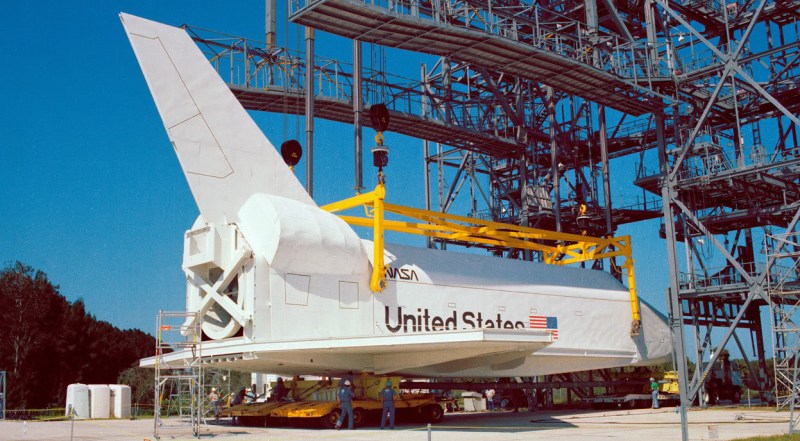 Pathfinder being used for testing at Kennedy Space Center in 1978.
Pathfinder being used for testing at Kennedy Space Center in 1978.
One Small Step, No Giant Leap
Clearly, Blue Origin's GS1 is in good company as far as the history of American spaceflight is concerned, and it's an excellent sign that the company is making progress with their long-delayed rocket. But while the company would undoubtedly like the press to see this public display of a completed test article as evidence that New Glenn is nearing operational status, the reality is less exciting.
Even if Blue Origin has already built a flight-ready New Glenn, of which there is currently no evidence, the company has yet to complete work on the BE-4 engines that would power the heavy-lift vehicle. These are the very same engines that United Launch Alliance has been waiting on to install into their prototype Vulcan rocket. With two flagship launch vehicles literally unable to get off the ground until the BE-4 is operational, there's enormous pressure on Blue Origin to deliver an engine that's already at least four years behind schedule.
The lack of main engines is bad enough, but there's also uncertainty surrounding the second stage of the New Glenn vehicle. The original plan was for the upper stage of the rocket to be expendable, with only the first stage landing on an ocean-going platform for refurbishment and eventual reflight; closely following the reuse program of the SpaceX Falcon 9 rocket. But over the summer it was revealed that Blue Origin intended to design a reusable second stage in an effort to lower operational costs and bring their capabilities better in line with SpaceX's Starship. With so many missing pieces this late in the game, it seems likely that even in the best case scenario, New Glenn is still several years away from entering operational status.
#currentevents #featured #space #be4 #blueorigin #nasa #newglenn #spacex #starship
1 Shares
Коммерческая орбитальная космическая станция Джеффа Безоса
Orbital Reef («Орбитальный риф») — будущая коммерческая космическая станция Джеффа Безоса получила имя. Озвучены и предполагаемые сроки реализации проекта — конец текущего десятилетия. Сообщается, что «Орбитальный риф» будет «универсальным бизнес-парком» (mixed-use business park) для десяти космонавтов. Строится станция будет в сотрудничестве с Boeing и Sierra Space (подразделение Sierra Nevada Corporation — американского частного подрядчика в области аэрокосмической промышленности и нацбезопасности, занимается модификацией самолётов, космических […]
#космос #общество #blueorigin #boeing #космическиеаппараты #пилотируемыекосмическиеполёты #lang_ru #ru #22centuryru #22century #хх2век #xx2век #наукаитехника
Jeff Bezos' Blue Origin announces plans for space station Orbital Reef
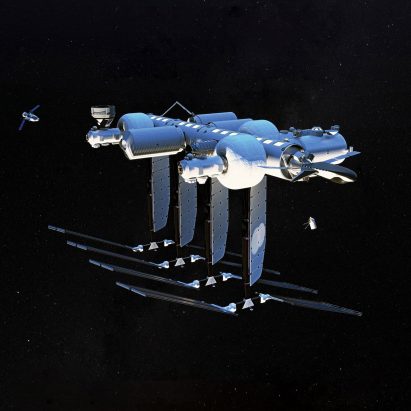
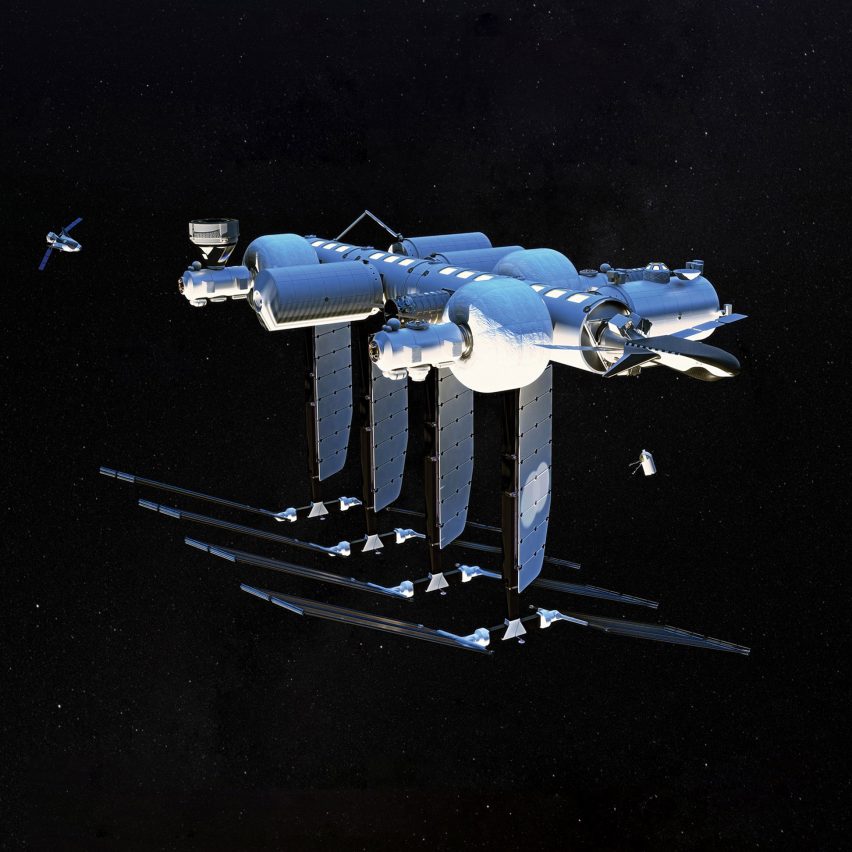
Blue Origin, the spaceflight company founded by Amazon executive chairman Jeff Bezos, has unveiled plans for a station that will be operated as a "mixed-use business park" in space.
Called Orbital Reef, the space station is designed to give anyone "the opportunity to establish their own address on orbit" by providing services such as planning, payload development, training, transportation, data analysis and security.
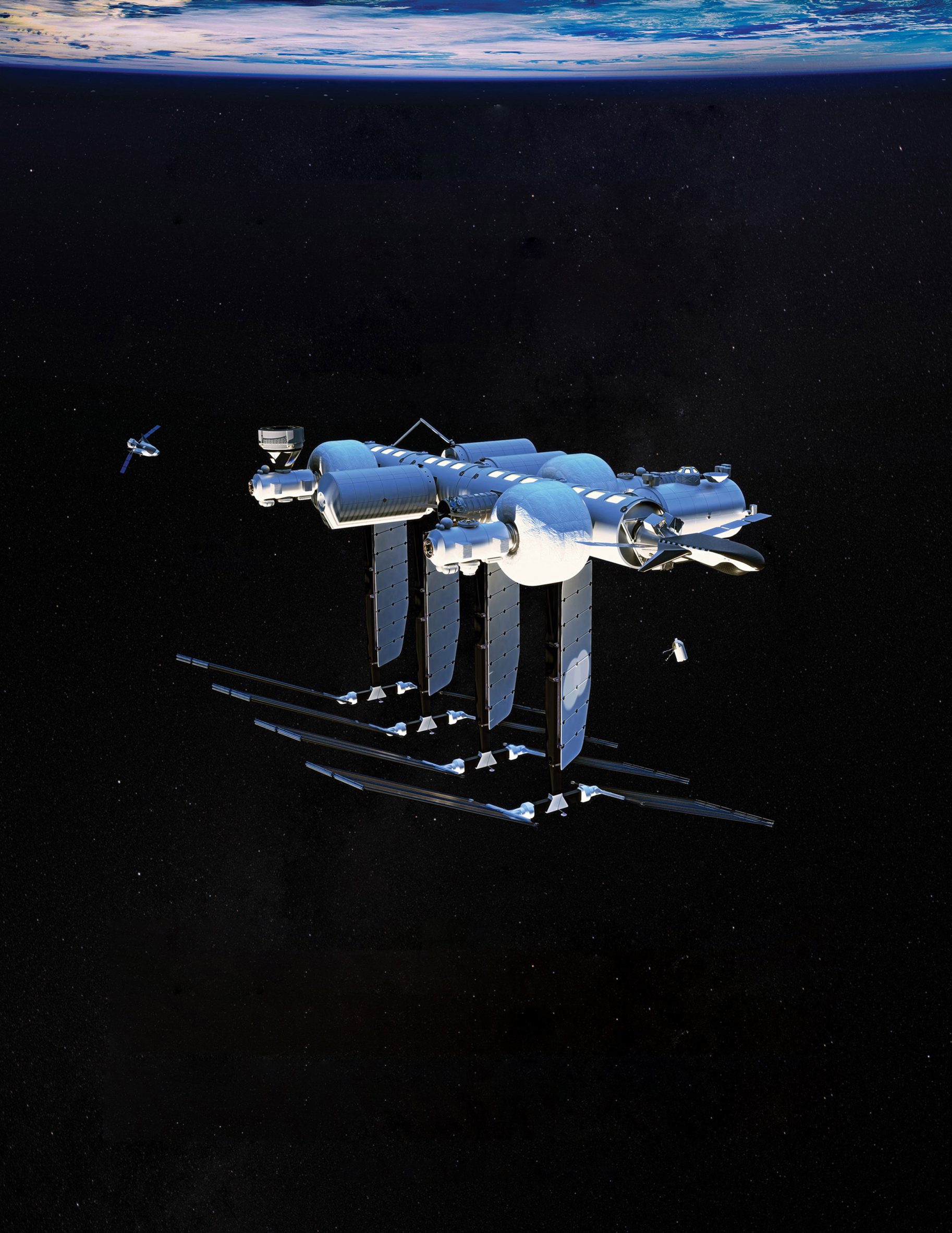 The Orbital Reef space station will be in an orbit close to Earth
The Orbital Reef space station will be in an orbit close to Earth
Blue Origin describes the station as a "mixed-use business park" that will provide the infrastructure that companies need to open new markets in space.
This includes reusable space transportation and an open-system architecture that allows users to scale up their use of the station as needed, with features such as module berths, vehicle ports, utilities and amenities set to grow with the market.
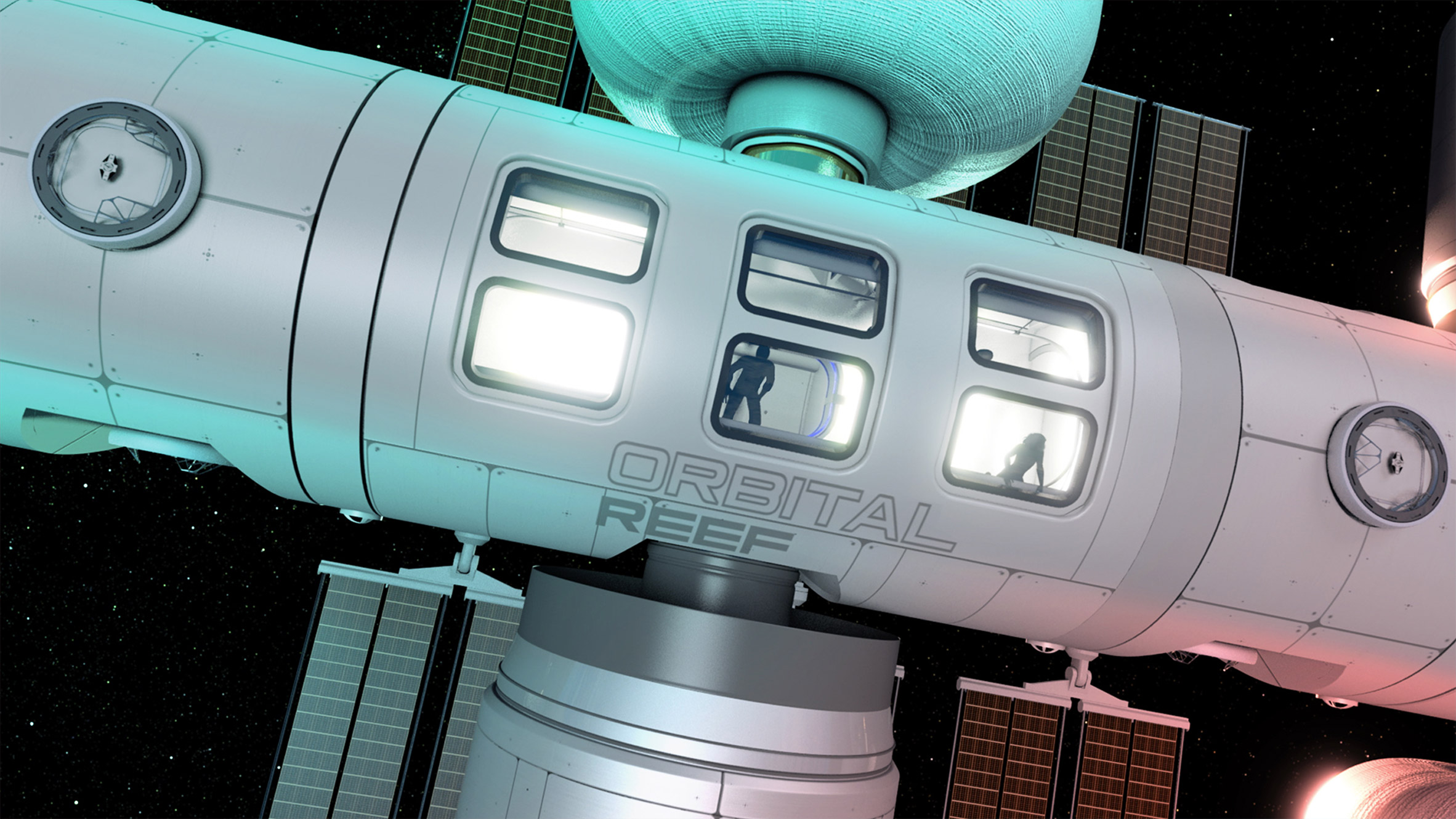 The space station by Blue Origin will have Earth-facing living quarters
The space station by Blue Origin will have Earth-facing living quarters
Blue Origin is developing the station with commercial space company Sierra Space. It will be built in low Earth orbit – an orbit relatively close to the Earth's surface – and will be commercially owned, developed and operated.
"For over sixty years, NASA and other space agencies have developed orbital space flight and space habitation, setting us up for commercial business to take off in this decade," said Brent Sherwood, senior vice president of advanced development programs for Blue Origin.
"We will expand access, lower the cost, and provide all the services and amenities needed to normalize space flight. A vibrant business ecosystem will grow in low Earth orbit, generating new discoveries, new products, new entertainments, and global awareness."
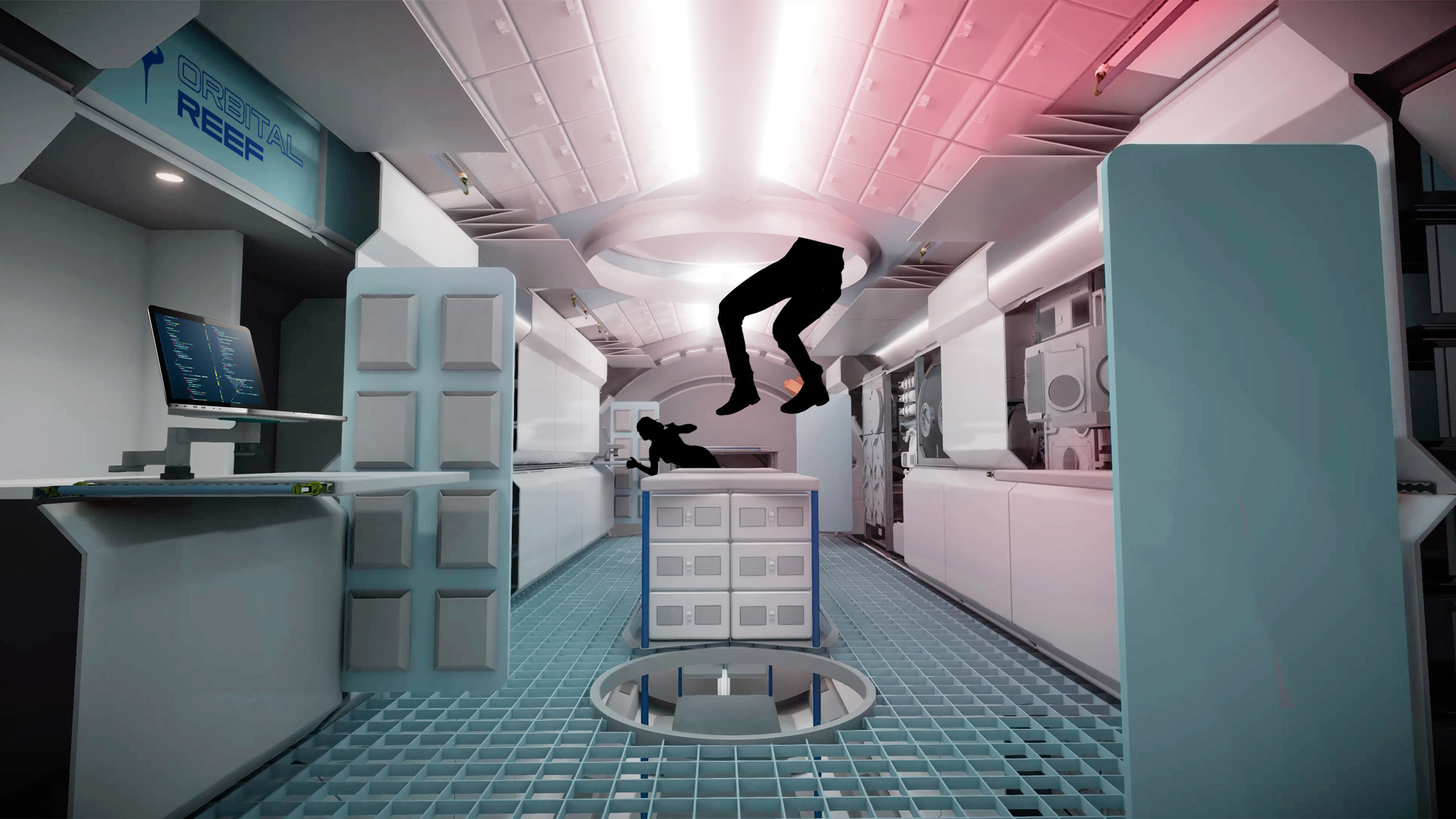 Users will be able to scale up their use of the station when needed
Users will be able to scale up their use of the station when needed
The Orbital Reef project aims to introduce "a new kind of space architecture", the company said, with modules featuring large Earth-facing windows and distinct quarters for living and working.
Recreation opportunities and medical care will also be provided with the aim of supporting visits of any length.
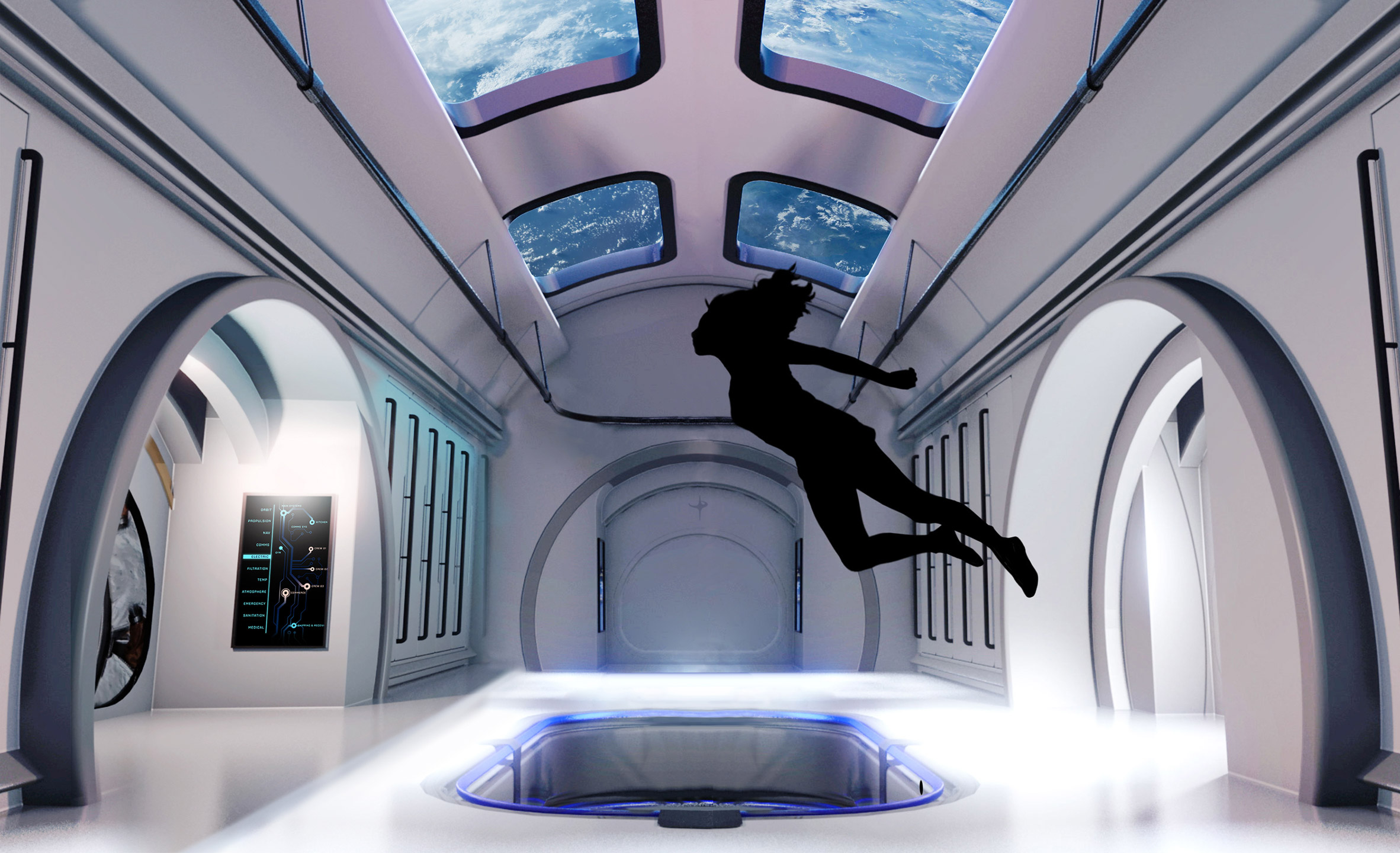 Blue Origin is working with Sierra Space on the project
Blue Origin is working with Sierra Space on the project
As well as living quarters, the station will also have "out-of-this-world" research facilities and services will include robotic servicing.
Orbital Reef's targeted users include "space agencies, high-tech consortia, sovereign nations without space programs, media and travel companies, funded entrepreneurs and sponsored inventors, and future-minded investors," Blue Origin said.
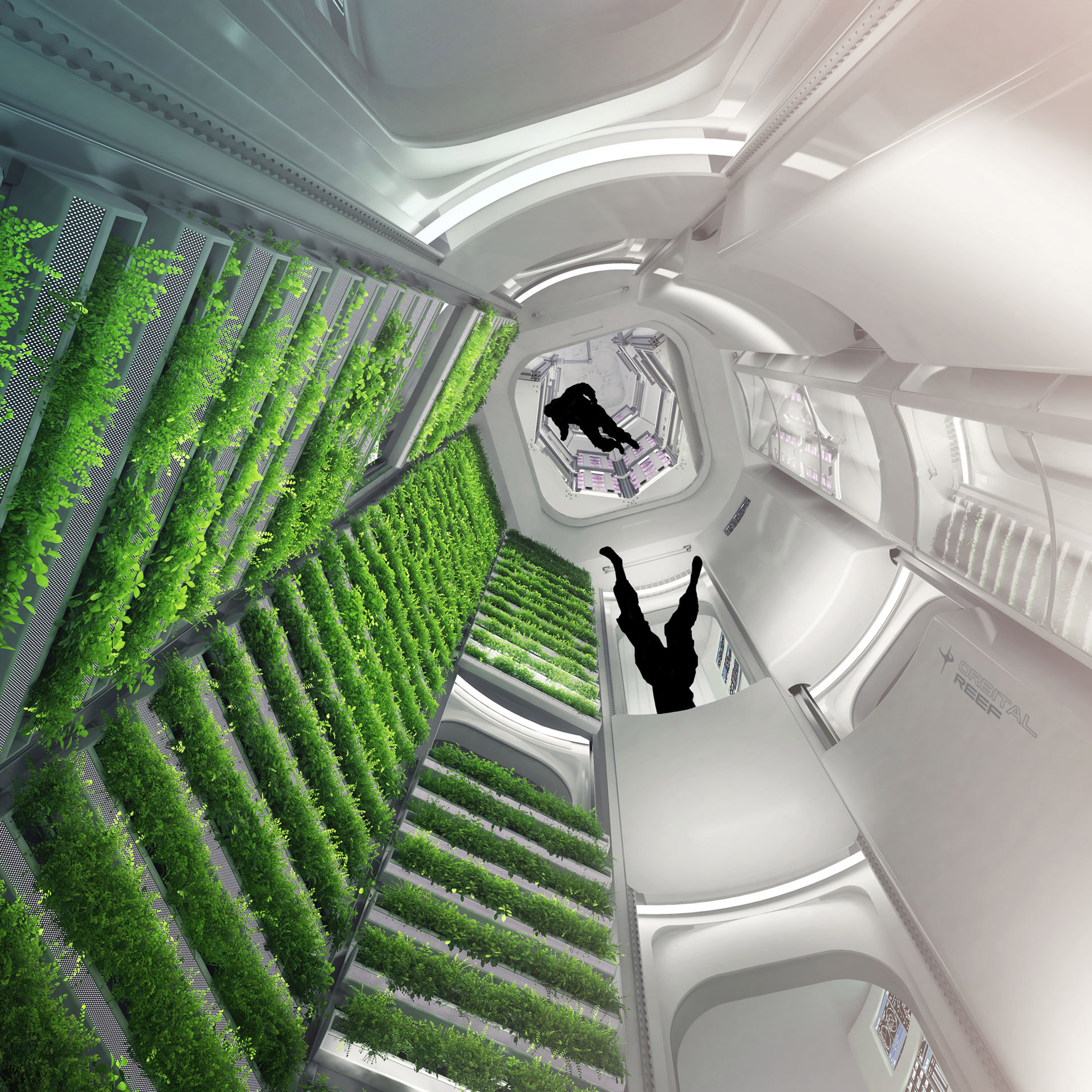 Orbital Reef will feature research facilities
Orbital Reef will feature research facilities
The station, which Blue Origin aims to start operating in the second half of this decade, will use Sierra Space's Large Integrated Flexible Environment (LIFE) module and node module. The company’s runway-landing Dream Chaser spaceplane will be used for crew and cargo transportation.
It is also backed by Redwire Space, Genesis Engineering Solutions, and Arizona State University.
[ 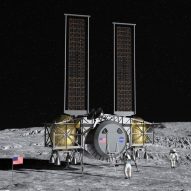
Read:
NASA selects Musk and Bezos to design landers for 2024 mission to land first woman on moon
](https://www.dezeen.com/2020/05/01/nasa-moon-lander-elon-musk-space-x-jeff-bezos/)
Boeing will work on the station's science module, station operations, maintenance engineering and a crew spacecraft called Starliner.
"This is exciting for us because this project does not duplicate the immensely successful and enduring ISS, but rather goes a step further to fulfill a unique position in low Earth orbit where it can serve a diverse array of companies and host non-specialist crews," said John Mulholland, Boeing VP and program manager for the International Space Station (ISS).
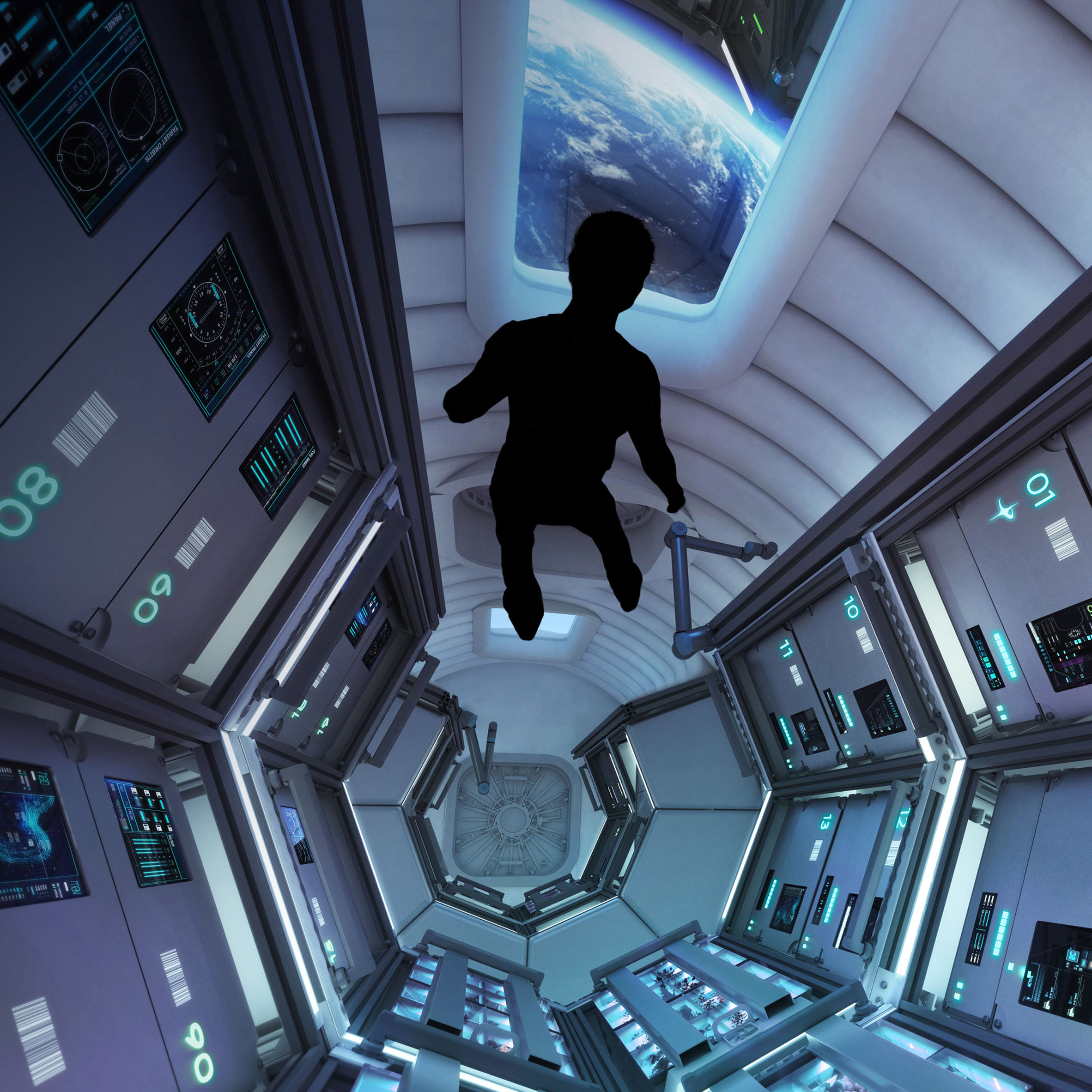 It will start operating in the second half of this decade
It will start operating in the second half of this decade
When launching the company's Blue Moon lander in 2019, Bezos suggested that future human beings will live on a series of manufactured worlds in space.
Blue Origin was one of three companies chosen by NASA to create landers for a 2024 mission that will land the first woman on the moon, but lost out on the contract to Elon Musk's SpaceX.
The images are courtesy of Blue Origin.
The post Jeff Bezos' Blue Origin announces plans for space station Orbital Reef appeared first on Dezeen.
William Shatner is more than an actor.
He just has proven that with this speech.
Spock: “fascinating”
[video width=”582″ height=”278″ mp4=”https://dwaves.de/wp-content/uploads/2021/10/StarTrek\_first\_Generation\_Captain\_Kirk\_William\_Shatner\_emotional\_moving\_phiosophical\_speech\_after\_StarTrek\_with\_BlueOrigin\_2021-10.mp4″\]\[/video\]
#linux #gnu #gnulinux #opensource #administration #sysops #StarTrek #CaptainKirk #WilliamShatner #phiosophical #speech #BlueOrigin #StarTrekking
Originally posted at: https://dwaves.de/2021/10/14/startrek-first-generation-captain-kirk-william-shatner-emotional-moving-phiosophical-speech-after-startrekking-with-blueorigin/
One person like that
1 Comments
Капитана Кирка отправят в космос
90-летний канадский актёр Уильям Шетнер планирует отправиться в космос на борту суборбитального корабля New Shepard компании Blue Origin. Если полёт состоится, Шетнер станет самым пожилым человеком, побывавшим в космическом пространстве. Актёр, известный главным образом по ролям капитана звездолёта «Энтерпрайз» Джеймса Тиберия Кирка в сериале «Звёздный путь» и адвоката Дэнни Крейна в «Юристах Бостона», отправится покорять просторы Вселенной в компании ещё трёх пассажиров. […]
#космос #blueorigin #lang_ru #ru #22centuryru #22century #хх2век #xx2век #наукаитехника
2 Likes
1 Comments

